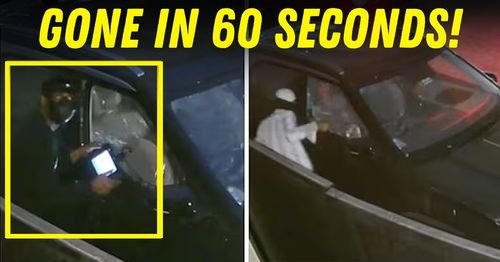A case study from South Delhi on how hackers are taking your car and driving off. Gone in 60 Seconds.
A brand-new Hyundai Creta was taken in less than 60 seconds last week in the Safdarjung Enclave of South Delhi, using a perfect combination of physical intrusion and digital hacking, rather than using force. The entire event, which was captured on CCTV, demonstrates a terrifying development in contemporary auto theft. It's not an isolated incident. Every car owner and manufacturer have to take this new generation of cyber-physical attacks against keyless-entry automobiles extremely seriously.

Analysis of the Root Causes
A serious security vulnerability in keyless entry systems is the root cause of the breach:
1. Diagnostic Port Exploitation: Service technicians are the main users of the onboard diagnostics (OBD-II) port found in modern cars. However, if it ends up in the wrong hands, it can be used to rewire the car's access controls.
2. Unprotected Firmware Logic: Without any lockout or verification, the car received reprogramming instructions from an unapproved device.
3. Absence of Physical Intrusion Alerts: Despite window tampering, no secondary alarm was set off, allowing inside systems to continue operating normally.
Hacking Methodology & Process
The theft happened as follows:
1.Target Selection: Valuable cars were found in upscale neighborhoods. Because of its popularity and resale value, a Creta was found.
2. Window Breach: In order to physically access the dashboard systems of the car, the attackers first broke the driver-side window, not so they could drive away.
3. Device Injection: To program keys or troubleshoot problems, they attached a portable diagnostic equipment, the kind typically found in service centers.
4.Key Signal Cloning: The tool created an internal fake key by evading the car's immobilization system and injecting a legitimate start sequence in a matter of seconds.
5. Escape: After that, the car was started and drove off, soundless, clean, and undetectable to the alarm system.
Why Hacking This Car Was So Simple
1. New directives were accepted by the car's internal computer without the source being confirmed.
2. OBD-II connections lacked authentication and access restriction.
3. The attackers made use of tools that appeared authentic and were readily accessible in black marketplaces.
4. Before the engine started, there was no supplementary challenge (such as a biometric or PIN).
5. The owner underestimated the targeted risks by parking in an open, yet "safe," area.
The Threat Environment
The events in South Delhi are a microcosm of a more significant problem. Globally, the number of keyless auto thefts is increasing as thieves use digital tools to build well-coordinated gangs and outsmart conventional security measures.
This now involves firmware-level control, wireless signal relay, and illicit diagnostic modification rather than hot-wiring.
Today's attackers come from a generation that:
. To choose targets, use sophisticated scanners.
. Use encrypted communications to exchange techniques across national boundaries.
. Make use of equipment designed for auto repair shops and workshops.
. Often leaving no physical evidence, operate with surgical accuracy.
Strategies for Car Owners to Reduce Risk:
- Installing a real steering lock is a great deterrent, even though it may appear archaic.
- Make use of a tamper-proof cap called an OBD port blocker, which limits access to the car's diagnostics.
- To stop key fob relay attacks, take into consideration RF signal blocks, also known as Faraday pouches.
- Parking in locations with active security is advised because CCTV is not a preventative measure on its own.
For Automakers:
- Put challenge-response mechanisms in place for firmware key programming attempts.
- When the automobile is parked, lock the OBD-II ports; only authorized in-car interfaces can unlock them.
- Prior to ignition, activate multi-layer authentication, which entails a second user-defined PIN or biometric unlock.
- OTA (Over-the-Air) firmware security fixes that strengthen access logic should be released on a regular basis.
For the Police:
1.Keep tabs on the grey market resale of important cloning and diagnostic tools.
2. Educate units about physical and cyber-theft techniques.
3. Work along with automakers to help forensic trace stolen cars.
Concluding remarks
This serves as a warning.
Nowadays, car hacking is not just a theoretical concept; it is being carried out with startling efficiency in our neighborhoods. Vehicles are becoming new assault surfaces as they get smarter. We run the risk of making convenience into vulnerability if we don't take aggressive steps to secure the hardware and software layers.
Data centers are no longer the only places that need cybersecurity. For your garage, that is.
Let's advocate for improved public knowledge, more intelligent manufacturing processes, and better automotive security requirements.
This is also an issue if you work in cybersecurity, the automotive industry, police enforcement, or even just own a car.
Follow cyberdeepakyadav.com on
Facebook, Twitter, LinkedIn, Instagram, and YouTube
What's Your Reaction?























